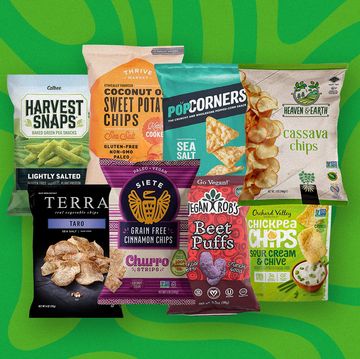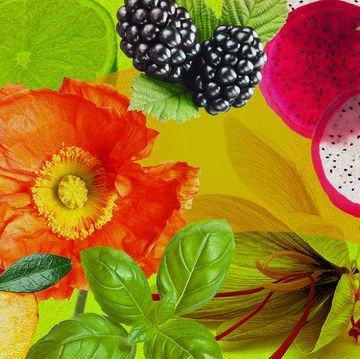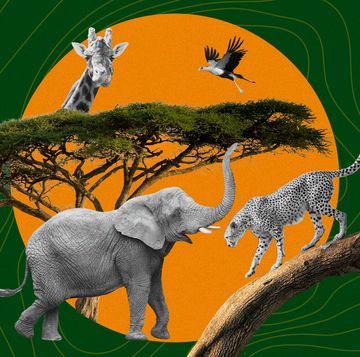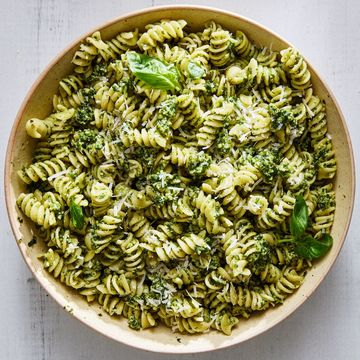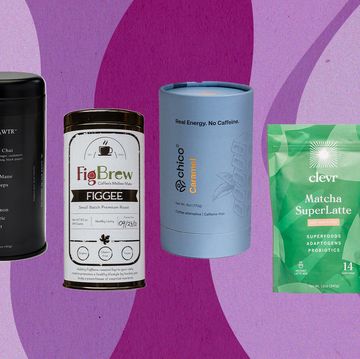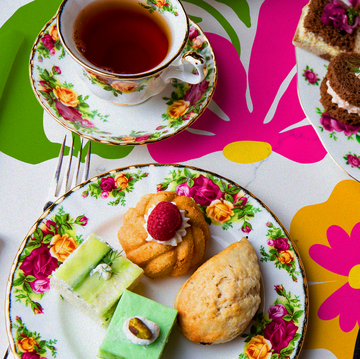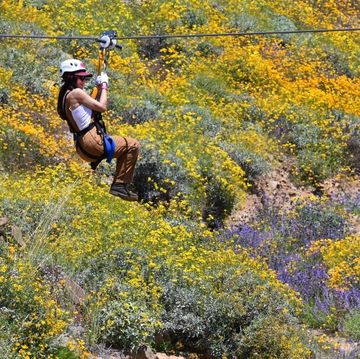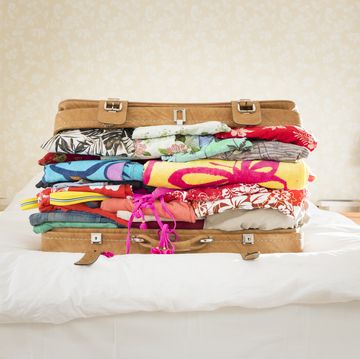It’s dreary and raining — as it almost always is — on the Ayrshire coast, about 100 miles outside Edinburgh. You wouldn’t know it inside Hendrick’s Gin Palace, the eccentric $16 million distillery in Girvan, Scotland, where the beloved gin punctuated with roses and cucumbers is now created. (Until 2018, Hendrick’s Gin was produced in an unremarkable corner of the nearby William Grant & Sons whiskey distillery.) Inside, it smells more like a tropical rainforest than a seaside Scottish burgh.
The Victorian-style brick building reminiscent of Willy Wonka’s chocolate factory is flanked by a pair of hothouses populated with an exotic array of fruit trees and flowering plants. “We recently added jasmine, which has a truly amazing scent,” says Hendrick’s master distiller Lesley Gracie, who uses the vegetation to develop distillates that could potentially be showcased in new spirits.
A chemist by trade before becoming Hendrick’s master distiller in 1999, Gracie is the creative force behind a series of limited-batch spirits released under the Cabinet of Curiosities label that layer unique botanicals atop Hendrick’s signature expression, including Neptunia, Lunar, and Amazonia, a version of Hendrick’s released in 2020 that was inspired by a trip Gracie took to the jungles of Venezuela.
In recent years, much of the spirits industry has begun looking at the world through rose — or lilac or lavender — colored glasses. Many distilleries now regularly add out-of-the-ordinary florals to one-off formulations in an effort to both expand palettes and garner attention in a saturated market. This isn’t simply a flower plopped atop a drink as a pretty garnish. It’s part of a flavor revolution. Bloom Gin, for example, released a special jasmine-and-rose rendition, while Bombay Sapphire cultivated English Estate, a gin featuring the essences of pennyroyal mint and rose hip.
Gracie’s latest creation for Hendrick’s is Flora Adora, a wildflower-centric tipple made with 11 botanicals influenced by her fascination with butterflies, bees, and other pollinators. “I’m obsessed with orchids,” Gracie says. “I have over 60 orchids around my home. Carefully watering them takes almost all day. I love the wildflowers outside the Hendrick’s Gin Palace, where I scattered the seeds when we first moved in, and seeing them bloom provides inspiration every day on my way into work.”
Flora Adora’s background of juniper and coriander is strengthened with a smattering of sweet floral characteristics like lavender that Gracie hopes evokes her magical indoor gardens. “I see flavors as shapes,” she says, “and I like all my gins to have a nice round flavor with no sharp points sticking out. But as to what they are, well, some secrets are better left unsaid. It’s about appreciating the flavor as a whole bouquet of aromas, not deconstructing the individual elements.”
The taste and fragrance of unique florals aren’t the only factors now seeding the imaginations of mixologists. It’s also their rarity. Miguel Lancha, a cocktail innovator at José Andrés Group in Washington, D.C., created a Magnolia Ramos Gin Fizz by distilling the delicate pink-and-white flowers in a rotary evaporator, as well as infusing them in a white vermouth. The drink — a riff on the New Orleans classic — is garnished, naturally, with a magnolia petal.
Lancha was motivated by the flower’s uncommon qualities. “Magnolias are only in season for about two to three weeks and blossom sometime between spring and early summer,” he explains. “Because they’re protected, they can’t be harvested. You can only use the ones that fall off the tree, and you have about 24 to 36 hours to treat them before they oxidize, which is pretty cool.” Lancha and his team have also developed cherry blossom cocktails to mark the iconic but limited arrival of the blooms in D.C.
Christopher Longoria, a partner at West Beverage Consulting and bar director at the Italian restaurant Che Fico in San Francisco, has been similarly bewitched by floral-heavy spirits like Grand Poppy, an amaro made with California poppies. For his Seville Orange cocktail, he pairs the amaro with the herbaceous Cappelletti aperitif, bourbon, orgeat, and juice made from fresh lemons and, of course, Seville oranges.
“The Grand Poppy does a really good job of balancing out the bitterness of the drink,” Longoria explains. “It also pairs nicely with the Cappelletti, creating this apex where the acid of the Seville oranges is the leading characteristic, and the bourbon feels lighter. It’s kinda like magic.”
With the trend continuing to bloom, Hendrick’s master distiller Gracie is beginning to find it more difficult to pluck out new flavors. “As more people venture into producing new liquids, it’s harder to find something different,” she acknowledges. “However, I am lucky enough to meet some great people from all over the globe, and I always ask them to send me samples of plants and flowers special to their part of the world.”
For her part, Gracie is willing to go bananas with any flora that makes its way into Hendrick’s Gin Palace. She was surprised to discover that three banana trees in her hothouse bore fruit. “These will probably be the only bananas grown in southwest Scotland,” she teases. Is banana-flavored gin on the horizon? “I have lots of different ongoing experiments involving strange combinations of plants and flowers, some of which may make it into new products, but many will definitely not.”
Derrik J. Lang is Shondaland’s Lifestyle Editor. Follow him on Instagram at @derrikjlang.
Get Shondaland directly in your inbox: SUBSCRIBE TODAY





